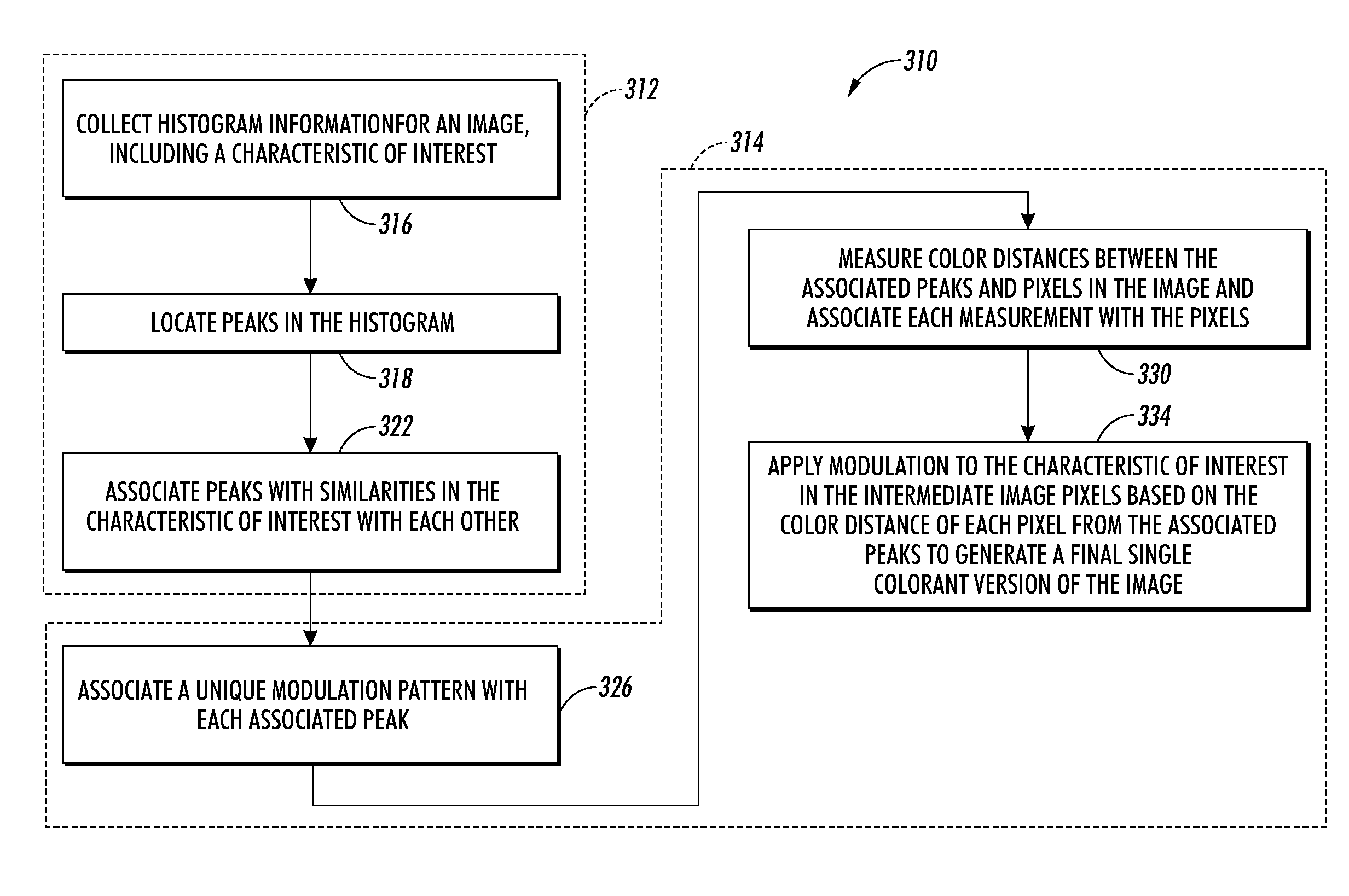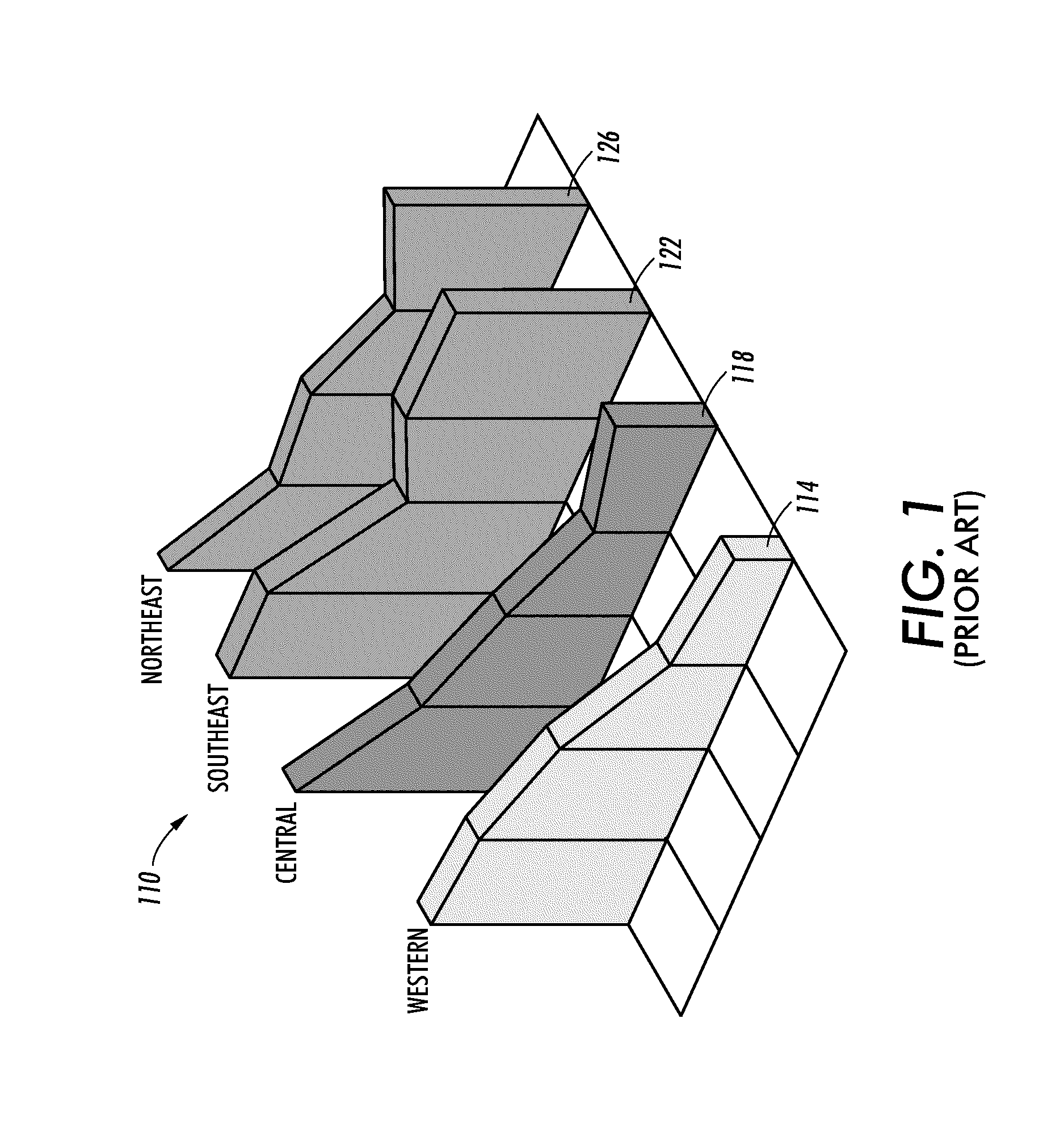Intelligent color to texture converter
a color to texture converter and intelligent technology, applied in the field of image rendering, can solve the problems of difficult communication of concepts and ideas to others, impracticality or prohibitively expensive distribution of a large number of color copies of presentation materials, and inability to readily obtain color reproduction equipment, etc., to achieve minimal distortion, add distinguishing textures, and maximize information preservation
- Summary
- Abstract
- Description
- Claims
- Application Information
AI Technical Summary
Benefits of technology
Problems solved by technology
Method used
Image
Examples
Embodiment Construction
[0026]Referring to FIG. 1, a prior art image processor produces a prior art, black and white version 110 of a first color business graphic (not shown). The first color business graphic is a 3D bar graph representing, for example, first quarter sales by region. In the color version, a western region bar is rendered in, for example a dark yellow, a central region bar is rendered in, for example, a dark green, a southeast bar is rendered in, for example, a dark blue, and a northeast region bar is rendered in, for example dark red. In the prior art black and white version 110, a western region bar 114 is rendered in a very light gray. A central region bar 118 is rendered in a dark gray. A southeast region bar 122 and a northeast region bar 126 are both rendered in a medium gray. The medium gray is the same for both bars 122, 126. Bars that were originally visually distinct by virtue of being rendered in blue and red respectively now appear related. A viewer of the prior art black and wh...
PUM
 Login to View More
Login to View More Abstract
Description
Claims
Application Information
 Login to View More
Login to View More - R&D
- Intellectual Property
- Life Sciences
- Materials
- Tech Scout
- Unparalleled Data Quality
- Higher Quality Content
- 60% Fewer Hallucinations
Browse by: Latest US Patents, China's latest patents, Technical Efficacy Thesaurus, Application Domain, Technology Topic, Popular Technical Reports.
© 2025 PatSnap. All rights reserved.Legal|Privacy policy|Modern Slavery Act Transparency Statement|Sitemap|About US| Contact US: help@patsnap.com



